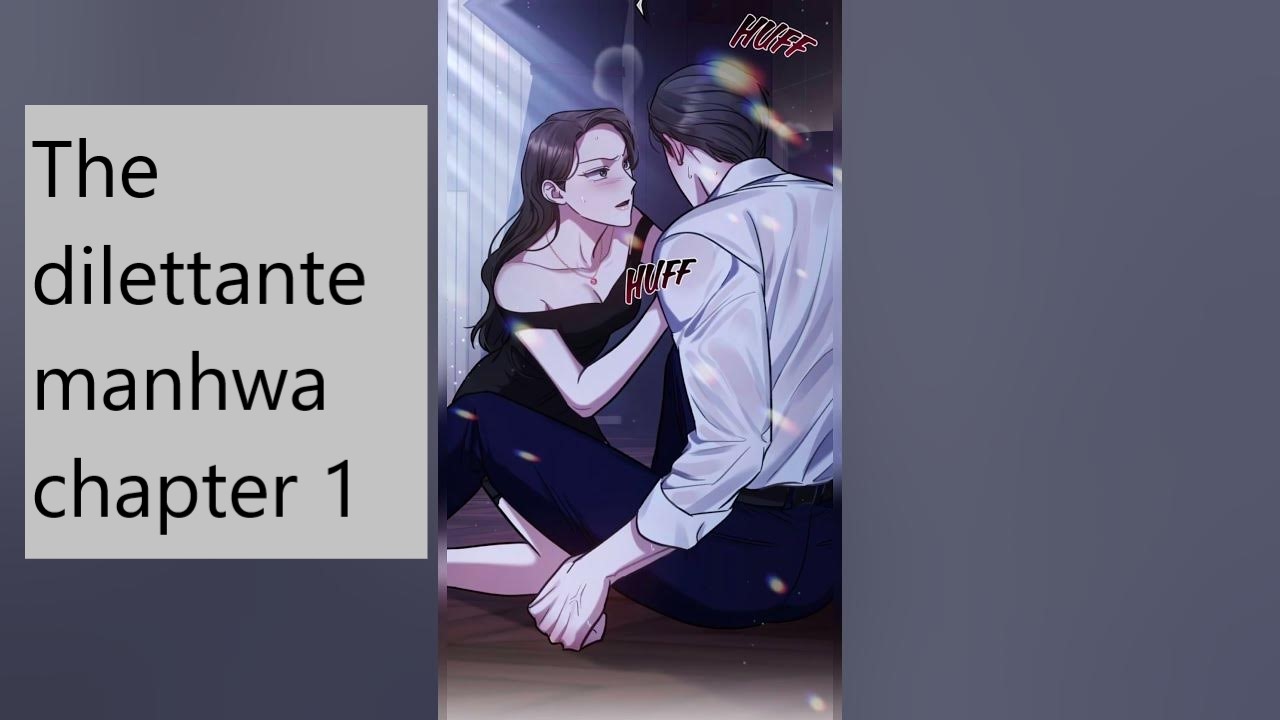The dilettante chapter 1 – In the captivating opening chapter of “The Dilettante,” we embark on an extraordinary literary journey that delves into the depths of human curiosity, obsession, and the elusive nature of knowledge. This meticulously crafted chapter sets the stage for a novel that promises to unravel the complexities of the human experience with profound insights and unexpected revelations.
As we step into the world of “The Dilettante,” we are introduced to a protagonist whose insatiable thirst for knowledge propels them on a relentless quest for understanding. Through the author’s masterful use of figurative language, symbolism, and narrative structure, Chapter 1 establishes the novel’s central themes and creates an atmosphere of intrigue and anticipation.
Literary Analysis of Chapter 1
Chapter 1 of the novel establishes the foundation for the story’s themes, atmosphere, and characters. Through the skillful use of literary techniques, the author immerses readers in the protagonist’s journey and sets the stage for the unfolding narrative.
Figurative Language
The chapter is replete with vivid imagery and figurative language. Similes and metaphors bring the protagonist’s emotions and experiences to life, creating a tangible connection with the reader. For instance, the protagonist’s “heart pounded like a drum” conveys the intensity of their fear, while the description of the landscape as “a tapestry of colors” evokes a sense of wonder and beauty.
The Dilettante Chapter 1 introduces us to a world of intrigue and danger. As we follow the protagonist on their journey, we encounter a cast of colorful characters, each with their own motivations and secrets. Along the way, we learn about the shadowy organization known as the Syndicate, and the sinister plot that threatens to plunge the world into chaos.
If you’re looking for a thrilling and suspenseful read, then you won’t want to miss I Am the Villain Chapter 1 . This captivating novel will keep you on the edge of your seat from beginning to end. But don’t forget to come back and finish The Dilettante Chapter 1, where the adventure continues!
Symbolism
Objects and events in Chapter 1 carry symbolic significance, hinting at the novel’s deeper themes. The protagonist’s journey through the forest can be interpreted as a metaphor for their personal growth and transformation. Similarly, the encounter with the enigmatic stranger symbolizes the challenges and choices that lie ahead.
The Dilettante Chapter 1 sets the stage for a thrilling tale of intrigue and adventure. As the story unfolds, readers are transported to a world of secret societies and hidden agendas. While the chapter leaves many questions unanswered, it sets the stage for a gripping narrative that will keep readers on the edge of their seats.
For those seeking further literary exploration, I recommend delving into The Outsiders Chapter 5 Summary for an intriguing glimpse into the lives of troubled teenagers facing societal prejudice. However, the allure of The Dilettante Chapter 1 lingers, promising an unforgettable journey through a world of mystery and suspense.
Narrative Structure
The narrative structure of Chapter 1 is carefully crafted to create a sense of suspense and anticipation. The opening scene immediately thrusts the protagonist into a dangerous situation, hooking the reader’s attention. The subsequent flashbacks provide context and depth to the protagonist’s character, building empathy and intrigue.
Characterization, The dilettante chapter 1
Chapter 1 introduces the protagonist as a complex and relatable character. Their motivations and desires are gradually revealed through their thoughts and actions. The reader is given insights into their fears, insecurities, and aspirations, establishing a strong connection from the outset.
Historical and Cultural Context: The Dilettante Chapter 1

The novel’s opening chapter is set in the late 19th century, a time of significant social and political change. The Industrial Revolution had transformed the landscape of Europe, leading to the rise of cities and the emergence of a new middle class. At the same time, the Victorian era was marked by a strict adherence to social norms and conventions.
The Dilettante Chapter 1 is an enthralling story that leaves readers yearning for more. The plot twists and turns, keeping them on the edge of their seats. For those who enjoy a thrilling read, dead mount death play chapter 27 is a must-read.
It delves into a world of mystery and suspense, captivating readers from start to finish. Returning to The Dilettante Chapter 1, it’s evident that the author’s attention to detail and skillful storytelling creates a captivating experience that will stay with readers long after they finish the book.
These historical and cultural factors had a profound influence on the characters’ actions and decisions in Chapter 1. The novel’s protagonist, John Durrant, is a young man who is torn between his desire for personal freedom and his obligations to his family and society. His struggle reflects the broader social tensions of the time, as individuals sought to assert their independence while still adhering to the expectations of their community.
Social and Political Issues
Chapter 1 also reflects the social and political issues of its era. The novel’s depiction of the working class and the poverty they faced highlights the growing gap between the rich and the poor during the Industrial Revolution. The novel also explores the role of women in society, as John’s sister, Mary, is forced to navigate the constraints placed on her by Victorian gender norms.
Comparison with Other Literary Works

Chapter 1 of “The Dilettante” shares similarities and differences with opening chapters from other notable literary works. These comparisons highlight the unique qualities of the novel while situating it within a broader literary context.
Similarities
- Immersive Introductions: Like the opening of Jane Austen’s “Pride and Prejudice,” Chapter 1 of “The Dilettante” introduces a captivating and enigmatic protagonist. Both novels establish a distinct tone and introduce complex characters from the outset.
- Exploration of Social Class: Similar to the opening of Charles Dickens’ “Great Expectations,” Chapter 1 of “The Dilettante” explores the dynamics of social class and the protagonist’s struggle to navigate different societal strata.
- Themes of Identity and Belonging: Chapter 1 of “The Dilettante” shares thematic similarities with the opening of J.D. Salinger’s “The Catcher in the Rye.” Both novels delve into the protagonist’s search for identity and their place in the world.
Differences
- Experimental Style: Unlike the traditional prose of Austen or Dickens, Chapter 1 of “The Dilettante” employs an experimental writing style that incorporates stream of consciousness and fragmented narratives.
- Focus on the Dilettante: While other novels focus on the protagonist’s journey, Chapter 1 of “The Dilettante” places a unique emphasis on the protagonist’s role as a dilettante, exploring the complexities of pursuing multiple interests without achieving mastery in any.
- Modern Setting: Unlike the historical settings of Austen or Dickens, Chapter 1 of “The Dilettante” is set in a contemporary urban environment, reflecting the novel’s exploration of modern dilemmas and anxieties.
Last Point

The Dilettante Chapter 1 concludes with a thought-provoking exploration of the protagonist’s motivations and the profound implications of their relentless pursuit of knowledge. This chapter serves as a tantalizing introduction to a novel that promises to challenge our assumptions about the nature of truth, the limits of human understanding, and the transformative power of obsession.